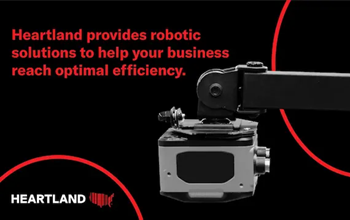
Order Picking Strategies to Try in 2024
Jan 25, 2024
Studies estimated that transportation and logistics companies deliver billions of stock items across the U.S. each year. That means distribution centers and order picking teams process millions of stock items every day to compose orders. Most warehouses and distribution centers report allocating as much as 55% of total operational costs to order picking in order to meet tighter shipping timeframes and increase throughput. As manufacturers and warehouses prepare for increases in inventory volume and continuous growth in e-commerce transactions, the time is ripe to evaluate picking strategies and order management solutions.
6 Ways to Improve Order Picking
Knowledgeable solution strategists will tell you that there is no one-size-fits-all order picking strategy. However, the following approaches have demonstrated a higher level of adaptability suitable to grow alongside inventory volumes.
- Combine Zone Picking, Batch Picking, and Wave Picking – Warehouses are constantly evolving to accommodate more inventory, changing labor pools, and new technology systems. Therefore, consider separating the warehouse into different zones with similar items for faster batch picking. Moreover, by releasing incoming orders in specific waves, warehouses can minimize travel times and alleviate pick zones for faster throughput.
- Integrate Goods-to-Picker Technologies – Travel time within pick routes can eat up to 50% of an employee’s total pick time. As a result, many warehouses seek to shorten travel distances by creating pick zones; however, SKU proliferation and dwindling storage space make this difficult. Fortunately, goods-to-picker technologies such as warehouse-ready, automated mobile robots (AMRs) help minimize travel time by delivering items to order pickers and moving completed pallets to the shipping dock. Warehouse robotics are also helpful for automating labor-intensive tasks such as heavy lifting and restocking shelves.
- Simplify Routes with Voice Picking Systems – Unlike traditional pen-and-paper methods, voice-enabled systems empower order pickers with clear, audible instructions. Advanced systems incorporate ergonomic headsets and hands-free computing and scanning to minimize touchpoints and accelerate picking with a user-friendly system. Fewer touchpoints ultimately translate to fewer manual errors and improved accuracy rates that lead to increased customer satisfaction.
Related: Check out three goals to keep in mind when optimizing order-picking systems.
- Optimize Warehouse Layout Based on Collected Data – Purchase patterns, receiving timelines, and forecasted demands all provide crucial data that can help relocate and combine inventory storage areas to group related stock closer in an area dedicated to high-demand inventory. Pick-frequency data may also assist in moving high-demand inventory closer to packing stations, essentially diminishing travel times and boosting order completion rates.
- Connect Teams with Advanced Warehouse Management Software (WMS) – Real-time digitization connects teams with updated stock information, thus preventing missed stockouts and lowering stock levels. Warehouses have leveraged robust systems to automate stock replenishment and update pick routes accordingly via a mobile device to notify order pickers of any sudden changes, streamlining communication and minimizing errors.
- Add a Layer of Augmented Reality – Like artificial intelligence, augmented reality has long been seen as a futuristic tool, too new for the fast-paced warehouse. However, promising studies have noted a 37% increase in picking speed for warehouses deploying AR within their picking systems. By eliminating paper-based directions, AR picking can shave off an average of 5 minutes per pick route, increasing overall productivity.
Order Picking Technologies Shaping the Modern Warehouse
To better prepare warehouses to thrive in today’s volatile markets, innovative technology systems are amplifying visibility and inventory control within warehouses. Listed below are a few technology systems currently empowering swifter inventory movement within distribution centers.
- Voice-Picking Systems - Voice picking is a technology that enables workers to receive instructions through a headset and respond verbally. The headset may also be paired with a wrist-mounted computer to enable hands-free scanning, thus boosting worker safety since order pickers can scan and verify orders without having to look at a screen while walking. The system guides the worker through the warehouse, providing instructions on which items to pick and where to find them. Workers can confirm their picks verbally SO the system updates inventory counts in real-time.
- Automated Barcode Scanning – Tried and true, barcode scanning continues to cement automated efficiency since it virtually eliminates the need for manual data processing and all the errors that accompany it. The scanner reads the barcode and automatically updates the inventory. This technology is particularly useful for high-volume, low-complexity picking operations. It can increase accuracy and efficiency by reducing the time it takes to locate and pick items.
- Autonomous Mobile Robots and Automated Guided Vehicles – AMRs work alongside humans to perform a variety of tasks, including order picking. Modern AMRs are capable of tripling productivity rates and may be equipped with infrared sensors to prevent collisions when programmed to outline shorter pick routes. Similarly, AGVs can be set to follow a specific path and can be used for a variety of tasks, including order picking. AGVs are particularly useful for large warehouses with high volumes of products. They can transport items to workers, reducing the time it takes to move products around the warehouse. This technology can also reduce the risk of accidents and injuries, as it eliminates the need for workers to move heavy loads manually.
Related: Take a look at the differences and similarities between AMRs and AGVs.
- RFID Tracking - Real-time inventory tracking allows teams to see where stock is located and proactively strategize a faster pick route. Furthermore, when connected to a WMS, RFID systems facilitate faster replenishment by tracking stock levels as they approach a preset threshold. While different for every warehouse, most RFID tracking systems will include RFID tags, readers, and antennas. Incoming inventory may be tagged upon arrival, so codes can read and update stock levels as stock enters its specified zone. By utilizing these technologies, businesses can streamline their inventory management processes, reduce costs, and improve their overall productivity levels.
Starting Your Order Management Solution
The warehouse industry is undergoing a technological revolution, and order picking is no exception. There are numerous technologies available that can help streamline operations and boost productivity. Nevertheless, not every solution may be suitable for your space. Working with an experienced solution provider allows you to evaluate potential implementation challenges such as:
- Space constraints and possible signal interference
- Workforce comfort level with proposed technologies
- Hardware options from different OEMs
- Employee training and piloting schedules
After accurately assessing your workflows, your provider can best connect you to a scalable approach for optimized order picking.
For more information on these approaches or to see how they can impact your workflows, contact our automation team.




